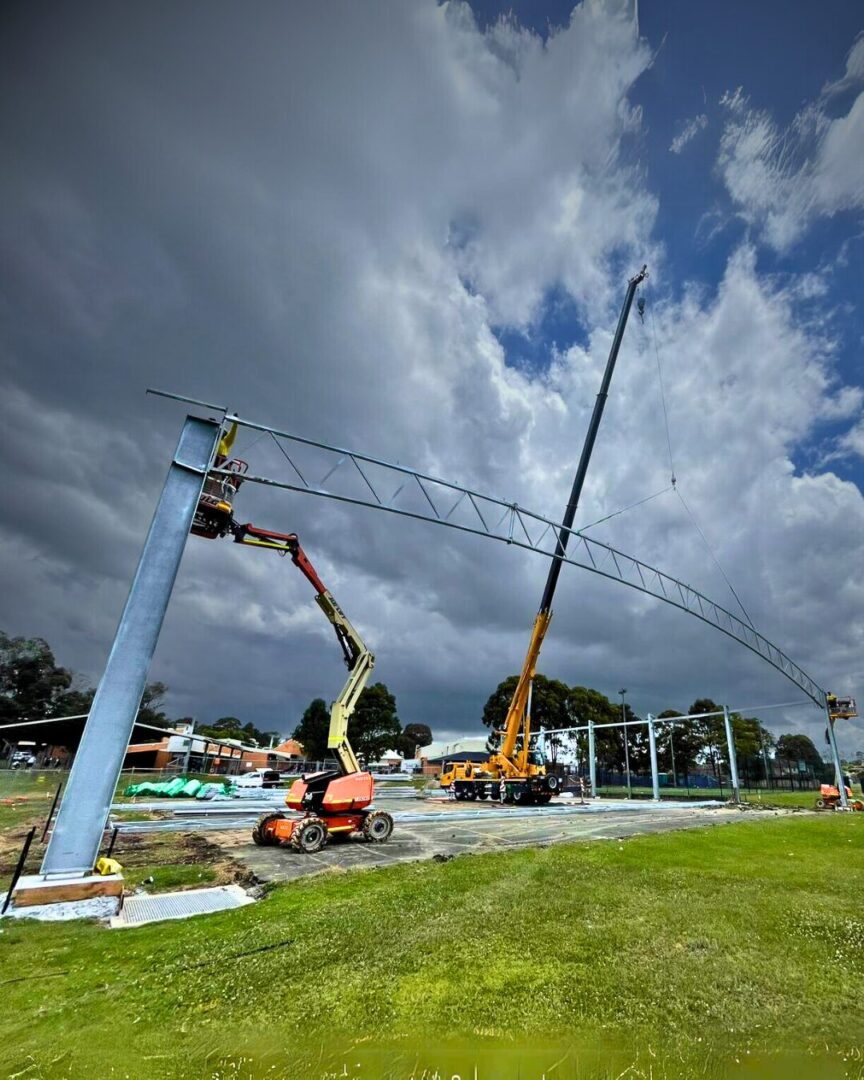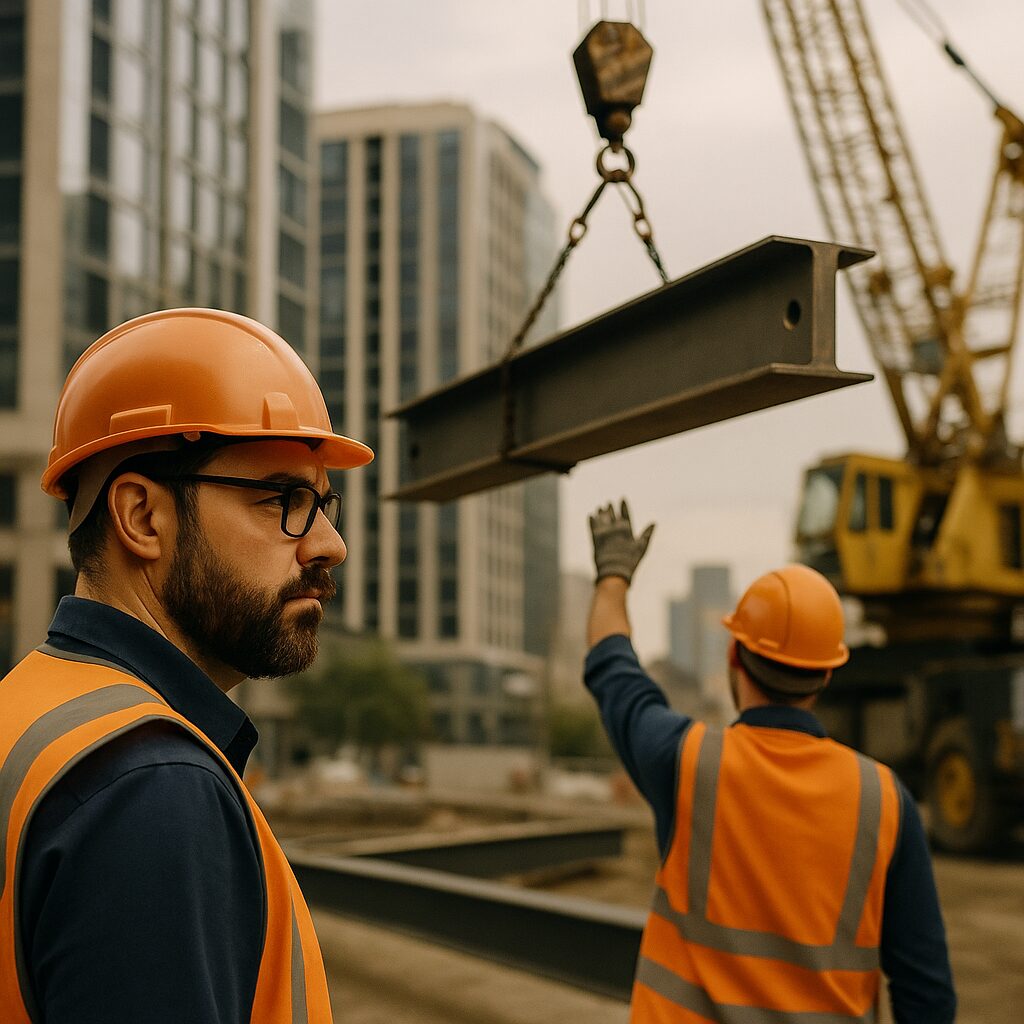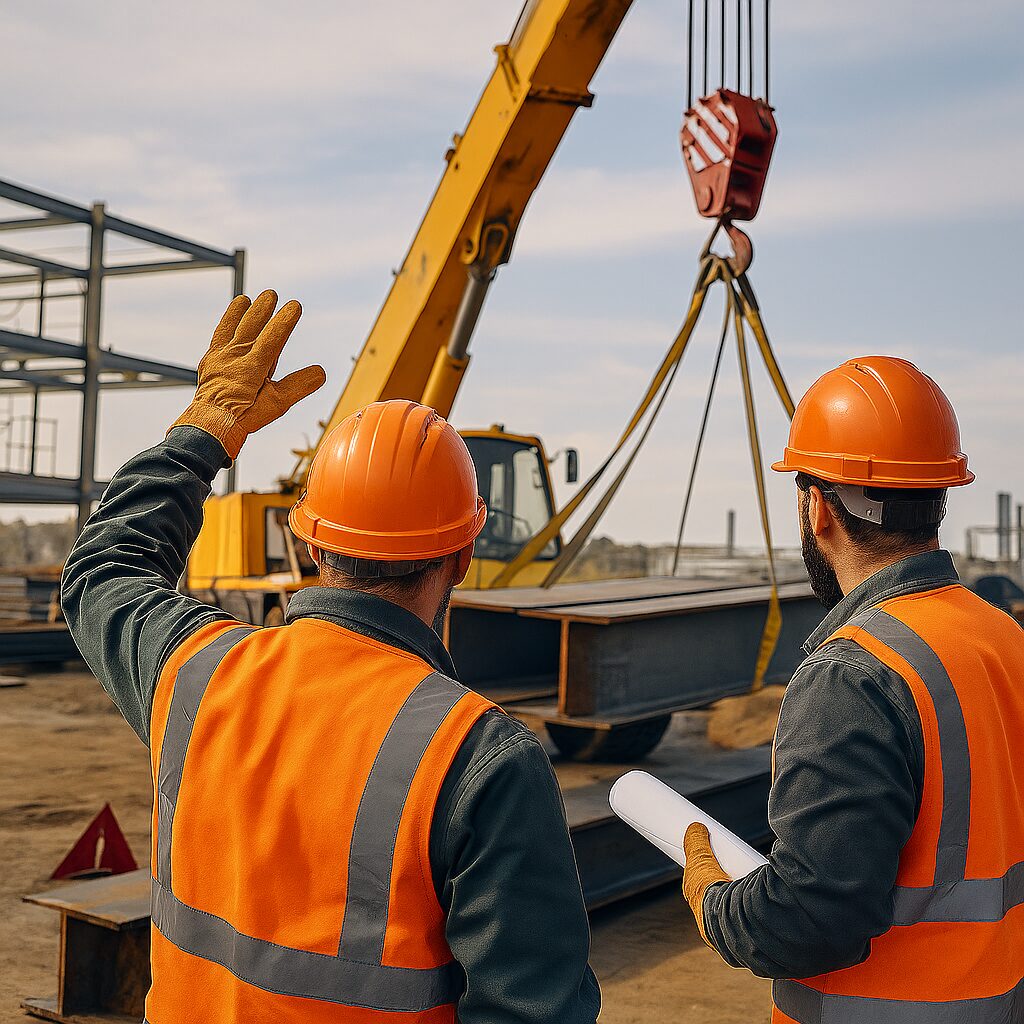What is Lift Planning?
Lift planning plays a crucial role in ensuring safe and efficient lifting operations. Industries such as construction, manufacturing, and oil & gas depend on structured plans to prevent accidents, optimise resources, and minimise downtime.
A well-developed lift plan considers multiple factors, including load weight, equipment selection, risk assessment, and safety protocols. Each step must be executed with precision to guarantee a controlled and successful lift.
Key Elements of a Lift Plan:
✔ Load Assessment – Evaluating weight, dimensions, and center of gravity.
✔ Equipment Selection – Choosing the right cranes, rigging gear, and lifting tools.
✔ Risk Assessment – Identifying hazards and implementing safety measures.
✔ Documentation – Outlining procedures, load charts, and compliance standards.
.
Key Components of Lift Planning
– Load Assessment: Ensuring Proper Load Handling
Accurate calculations are essential for maintaining a stable and controlled lift. Professionals analyse weight distribution, balance, and center of gravity to prevent shifting loads, which can lead to equipment stress or uncontrolled swings.
In addition to weight considerations, fragile materials such as glass panels or precision machinery require specialised rigging techniques. Padded slings, shock-absorbing straps, and stabilisation equipment protect delicate loads from potential damage.
– Equipment Selection: Choosing the Right Tools for the Job
Selecting the appropriate crane and rigging gear is critical to the success of a lift. Weight, reach, and site conditions determine the best crane for the operation. For example, tower cranes are ideal for high-rise construction, whereas crawler cranes perform well in confined spaces.
Additionally, rigging experts match slings, shackles, and spreader bars to specific load requirements. Steel slings withstand extreme temperatures, while synthetic slings offer UV protection for outdoor lifts. Choosing the correct gear enhances both safety and efficiency.
– Risk Assessment: Preventing Hazards Before They Happen
Every lifting operation presents potential dangers, but a thorough risk assessment reduces the likelihood of incidents.
Load instability & swings – Using taglines controls movement and prevents accidents.
Crane tipping risks – Proper counterweighting stabilises equipment placement.
Obstructed visibility – Spotters and effective communication improve coordination.
Alongside these measures, all team members undergo comprehensive safety training, which includes PPE usage, emergency procedures, and best practices for load movement. A well-trained crew significantly lowers the chance of worksite accidents.
– Documentation: Ensuring Compliance & Precision
Lift plans must follow industry regulations while being clear and detailed. Professionals document:
✔ Step-by-step lift procedures for consistent execution.
✔ Load charts & operator guidelines to prevent mishandling.
✔ Safety diagrams & compliance checks to align with ISO 14001 and AS/NZS standards.
Before any lifting operation begins, engineers and safety officers review and approve the plan, verifying that all necessary safety measures are in place.
The Lift Plan Documentation Process
Site Assessment & Obstacle Identification – Experts conduct a thorough site inspection to identify hazards such as uneven terrain, power lines, and structural obstructions. Addressing these risks early ensures a safe lifting environment.
Review & Approval – Engineers and project managers carefully examine the lift plan to confirm compliance, feasibility, and operational safety before proceeding with the lift.
Why Professional Lift Planning Matters
Reduces Downtime & Improves Efficiency
A well-structured lift plan minimises unexpected delays by ensuring every step is carefully pre-planned and executed smoothly. This approach keeps projects on track and within budget.
Enhances Safety & Lowers Risks
Following strict safety protocols prevents equipment malfunctions, workplace accidents, and regulatory violations. With expert oversight, risks decrease significantly.
Provides Access to Advanced Equipment & Expertise
Professional rigging teams utilise cutting-edge technology to improve safety and efficiency, such as:
✔ Load monitoring systems – Prevents overloading and ensures precision.
✔ Remote-controlled cranes – Enhances control and reduces human error.
✔ Automated lifting tools – Speeds up operations while maintaining accuracy.
.
Frequently Asked Questions (FAQs)
🔹 Q1: What is lift planning, and why is it important?
Lift planning ensures lifting operations are safe, efficient, and compliant with industry regulations. Without proper planning, projects face increased risks and delays.
🔹 Q2: How does professional lift planning improve safety?
Certified riggers conduct risk assessments, follow best practices, and implement safety measures to prevent accidents.
🔹 Q3: What equipment is commonly used in lift planning?
Essential tools include cranes, slings, shackles, spreader bars, and load monitoring systems. Selecting the right equipment ensures a controlled and successful lift.
Need Expert Lift Planning? We’ve Got You Covered!
At Hard Bakka Rigging, our certified riggers ensure every lift is handled safely, efficiently, and in full compliance with industry standards. Whether it’s a routine lift or a high-risk operation, we have the expertise and equipment to get the job done right.
🔗 Learn more about our lifting solutions 🔗



